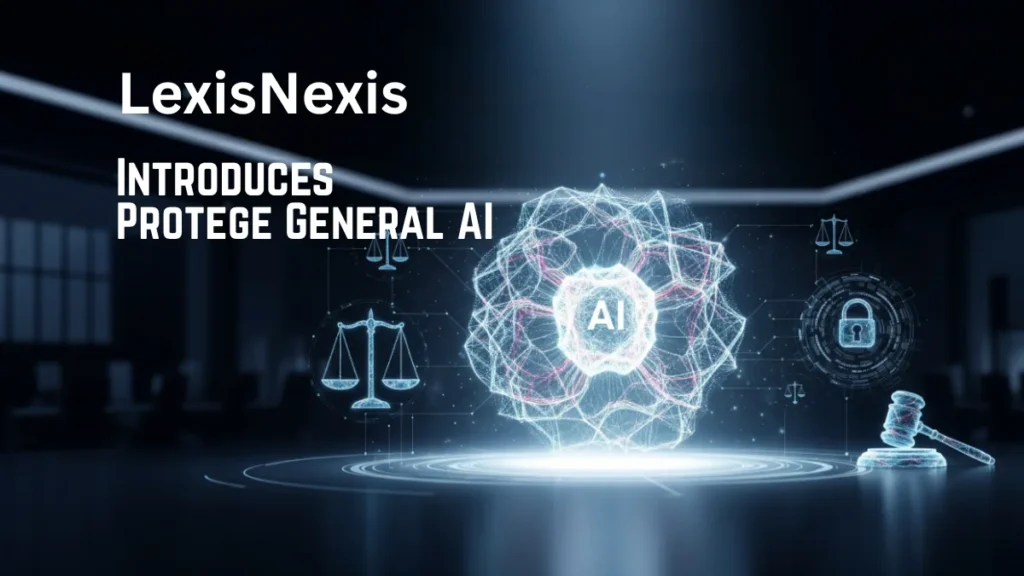LexisNexis is blurring the lines between legal AI and general-purpose AI. Its new Protégé General AI lets lawyers tap GPT-5 and other top models without leaving their secure Lexis+ workflow.
When a law firm needs the precision of legal AI but also the versatility of a general-purpose model like GPT-5, context switching can be a productivity killer. LexisNexis just eliminated that problem.
The company’s new Protégé General AI integrates multiple leading general AI models—including OpenAI’s GPT-5, GPT-4o, and o3, plus Anthropic’s Claude Sonnet 4—directly into the existing Lexis+ AI platform. This means legal professionals can toggle between legal-tuned AI and general-purpose AI instantly, all while staying inside a secure, encrypted environment.
Key Takeaways:
- One-stop AI access: Switch between legal and general AI in seconds.
- Multiple models, one workflow: GPT-5, GPT-4o, o3, Claude Sonnet 4.
- Secure by design: Runs inside LexisNexis’s encrypted environment.
- Legal verification included: Shepard’s Citation Agent checks sources.
- Customizable controls: Firms can disable or limit general AI access.

Why It Matters for Legal Professionals
Until now, lawyers often used general AI tools outside their firm’s secure environment, raising data security and compliance concerns. Protégé General AI keeps everything in one place—reducing risk while boosting efficiency.
The general AI module works alongside Protégé Legal AI, which is powered by legal-optimized models like GPT-4.1, Claude 4, fine-tuned Mistral, and others. Legal AI responses are grounded in LexisNexis content and validated through Shepard’s citation service, ensuring accuracy and traceability.
For general AI queries—think drafting communications, brainstorming, or breaking down complex, non-legal problems—Protégé General AI pulls from open-web sources. It even runs a legal citation check if the response touches on legal topics.
Different Models, Different Strengths
LexisNexis isn’t just handing lawyers a toolbox; it’s helping them pick the right tool for the job:
- GPT-5: Combines deep reasoning with broad domain knowledge.
- Claude Sonnet 4: Fluent, structured responses ideal for client communications.
- GPT-4o: Fast and versatile for everyday brainstorming and research.
- OpenAI o3: Specializes in deep research and strategic decision-making.
Built on an Agentic AI Framework
Protégé Legal AI already operates on LexisNexis’s agentic AI framework, which orchestrates complex workflows. Agents can:
- Break down multi-layered queries (Orchestrator Agent)
- Provide real-time research guidance (Legal Research Agent)
- Review and refine answers before delivery (Reflection Agent)
Some agents act as generalists, while others specialize in contract review, citation checking, and other legal-specific tasks.
Security and Control at the Core
Every interaction happens inside LexisNexis’s encrypted environment. Organizations can disable general AI entirely, and individual users can switch it on or off as needed.
Sean Fitzpatrick, CEO of LexisNexis North America, UK, & Ireland, said the launch is a direct response to customer requests:
“Our goal is to support legal professionals with a personalized AI assistant that enables uninterrupted workflows and access to the full range of LexisNexis AI capabilities in one secure place.”
Preview Now, Full Release Later This Year
Around 200 law firms, corporate legal departments, and law schools are already part of the preview program. Full availability is expected before the end of the year.
With partners including AWS, Anthropic, Microsoft, Mistral, and OpenAI, LexisNexis’s multi-model strategy ensures that each AI task is matched with the most suitable model.
Conclusion
By uniting legal-specific AI and general-purpose AI under one roof, LexisNexis is changing how lawyers work—saving time, reducing risk, and opening new possibilities for research, drafting, and decision-making.
